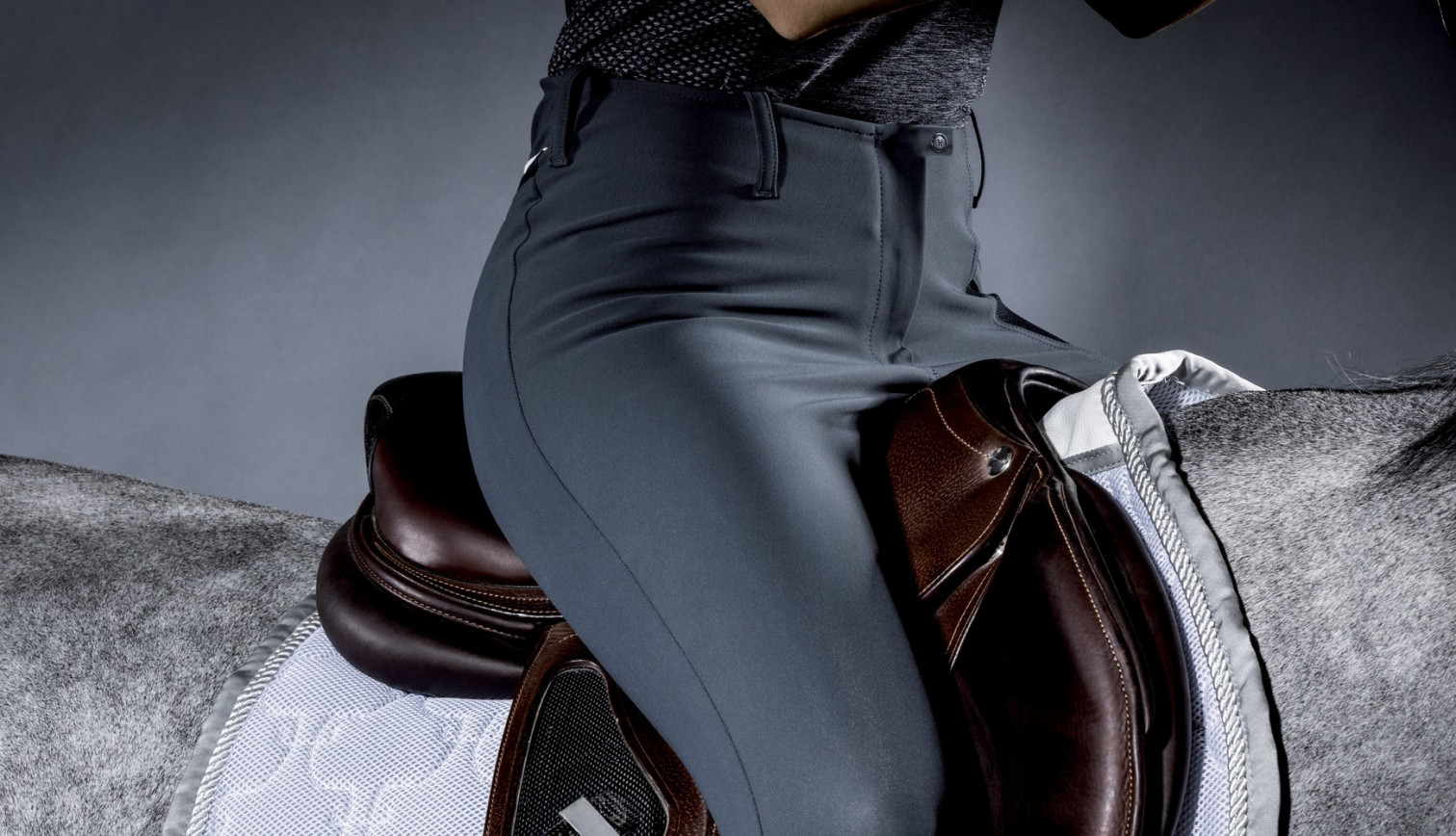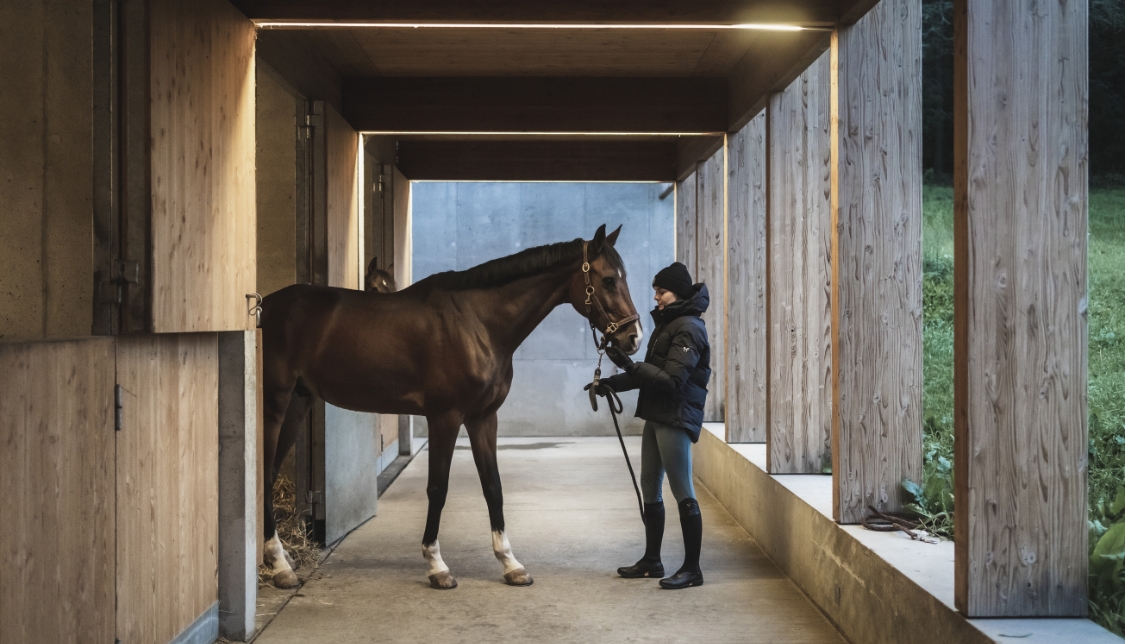Whether it is cold or hot, the second skin offers a lot of benefits

It already won skiers’ and runners’ hearts, what about horse riders’?
The second skin is THE technical item of clothing. Often overlooked, it is the first layer that touches the skin and therefore the most important one for an athlete.
How could the second skin become vital for a horse rider?
BECAUSE IT ENABLES THE BODY TO THERMOREGULATE ITSELF
● Thermal performance
● Breathability
● Cut for a very close fit
WINTER
Rain, wind or snow, we have no choice but to face the cold. It is important to wear appropriate clothes to regulate our body temperature depending on the efforts of the day.
Thanks to its tight cut and its microfibre fabric, the second skin enables to keep the heat in. It can also be used as the first layer of the three-layer clothing (see the explanations on the body mapping).
When it comes time to get on horseback and train, hard not to sweat. To keep our body warm, we must first keep it dry.
The second skin will allow a quick evacuation of the water released by the body.
SUMMER
We have to face the heat under a blazing sun.
The breathability of the second skin will provide a feeling of freshness and ventilation.
BECAUSE IT IS VERY COMFY
● Microfibre fabric
● Seamless
● Light
Regarding movements, horse riding is a sport that requires some amplitude in the gestures.
Flexible clothes enable to optimize the movements without being hindered.
Microfibre is a very elastic and light fabric. Its seamless manufacturing avoids any friction with the skin or irritation.
BECAUSE IT ENABLES TO WORK ON THE MUSCLES
● Activation of the deep muscles
● Muscle support
● Postural correction
Finally, it is important to tone up the body to properly hold on horseback. Holding well is only made possible by the deep muscles between the two shoulder blades. Activating and training those can result difficult.
The second skin precisely enables to draw closer these muscles by a mechanical effect.
That way, the back curve will be reshaped for a better posture on horseback and distribution of the pressure points.
COMPARISON BETWEEN COTTON AND MICROFIBRE FABRICS
| Fabric | Cotton | Microfibre |
| Origin | Natural Fibre | Synthetic Fibre (polyester, polyamide in most cases) |
| Elasticity | Low | Very high |
| Moisture absorption | 7 – 11 % | 0,4 – 0,8 % |
| Properties | Sensitive to insects, mould, rot and moths. Prone to creasing. | Hydrophobic (nonabsorbent). Resistant to sweat. High resistance to frictions. Not sensitive to insects. Uncrushable. |
| Texture | Soft, comfy, not so flexible | Soft, regular, flexible |
| Insulating capacity (heatretaining) | Low | High |
| Cost | Low | High |
Now, you know everything to ride like a professional!


